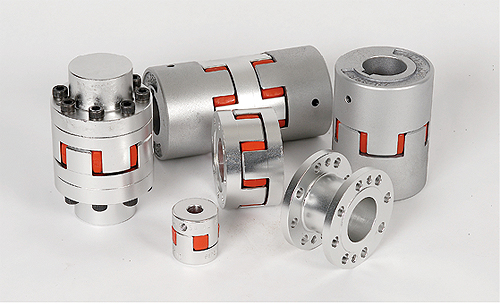
Elastomeric couplings can be divided into compression and shear depending on which load type is being applied to the elastomer.
Edited by Mike Jermann/Assistant Editor
There are numerous factors that one must take into consideration when selecting the right coupling. Factors such as horsepower, torque, shaft fits and axial movement can all affect the type and size of the coupling used. Because all couplings have a broad band of speed, torque, and shaft size capabilities, those criteria are not the best place to start. One must first determine what attributes beyond those basic criteria will be required for the application. If none stand out then simply choose the lowest cost that fits those basics, though there will often be other considerations that will narrow the alternatives down to certain types of couplings. All types, however, fall into one of two broad categories, elastomeric and metallic.
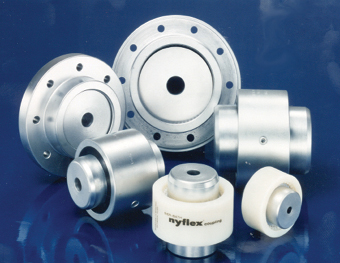
Elastomeric couplings include all designs that use a non-metallic element (usually rubber or plastic) within the coupling, through which the power is transmitted. Elastomeric couplings can be further classified as compression or shear depending on which is the principle load on the elastomer. Compression types include jaw, donut, and pin and bushing, while shear types include tire, sleeve, and molded elements.

Elastomeric couplings require no lubrication and are generally less expensive than metallic couplings.
Some of the advantages of elastomeric couplings include the fact that they require no lubrication and very little maintenance, along with the fact that they are usually less expensive than metallic couplings with the same bore capacity. Elastomeric couplings also have good vibration dampening and shock absorbing qualities and allow for more misalignment than most metallic couplings.
The couplings are, however, sensitive to chemicals and high temperatures and are usually not torsionally stiff enough for positive displacement. Elastomeric couplings can also be difficult to balance as an assembly and some types do not have good overload torque capacity.
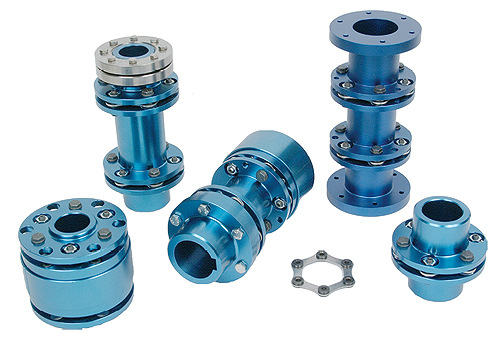
Metallic couplings gain their flexibility through loose fitting parts or flexible membranes.
Metallic couplings do not use elastomeric material to transmit torque. Their flexibility is gained through either loose fitting parts, which roll or slide against one another (gear, grid, chain)—sometimes referred to as “mechanical flexing”—or through flexing/bending of a membrane (disc, flex link, diaphragm, beam, bellows). These types of couplings are torsionally stiff and have good heat and chemical resistance. Metallic couplings also possess higher energy density than most elastomeric couplings while maintaining a low cost per unit of torque transmitted.

Metallic couplings lack vibration and shock dampening qualities and usually require lubrication.
Unlike elastomeric couplings, metallic couplings usually require lubrication and often have many parts that need to be assembled. They also lack the same vibration and shock dampening abilities and are less tolerant of misalignments.
Since couplings can act as both a protective device and as a means of transmitting torque it is important to consider how these couplings can fail. There are two basic failure modes for elastomeric couplings. They can break down due to fatigue from cyclic loading when hysteresis (internal heat buildup in the elastomer) exceeds its limits or from environmental factors such as high ambient temperatures, ultraviolet light or chemical contamination. Also keep in mind that all elastomers have a limited shelf life and would require replacement at some point even if these failure conditions were not present.
The primary cause of failure in metallic couplings is wear, so overloads generally shorten their life through increased wear rather than sudden failure. Membrane types generally are more expensive, need no lubrication and little maintenance, but their primary cause of failure is fatigue, so they can fail quickly in a short cycle if overloaded. If kept within their load ratings, they can be very long-lived, perhaps outlasting their connected equipment.
Sometimes selection of coupling type is guided by application, falling into one of five categories: General-Purpose Industrial, Specific-Purpose Industrial, High-Speed, Motion Control and Torsional. In each of these application categories there are elastomeric, metallic membrane flexing, and mechanical flexing types.
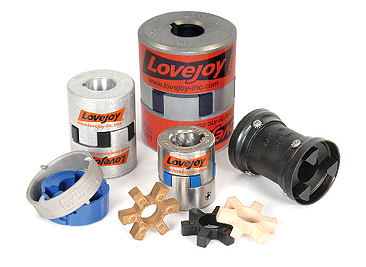
Once the coupling type is selected, there may be variations to consider within that type. For example, gear couplings offer a wide variety of configurations to combine coupling functions with other power train requirements, such as shear pin protection or braking. It is always a good idea to understand as much as possible about the two pieces of equipment to be connected. Let the driven equipment and the driver dictate the needs of the coupling. For example, is there a shock load or a cyclic requirement that may lead to an elastomeric coupling? If low speed and high torque are involved a gear coupling is likely best suited. High-speed machinery will lead to a disc or diaphragm coupling. Diesel drivers need the benefits of torsional couplings for best results. If the equipment is susceptible to peaks or transients, the application may need a high service factor or a detailed analysis of the coupling’s torque capabilities.
Lovejoy
www.lovejoy-inc.com
Filed Under: Couplings, MOTION CONTROL



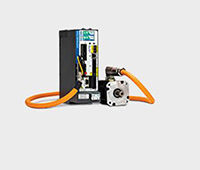

Tell Us What You Think!